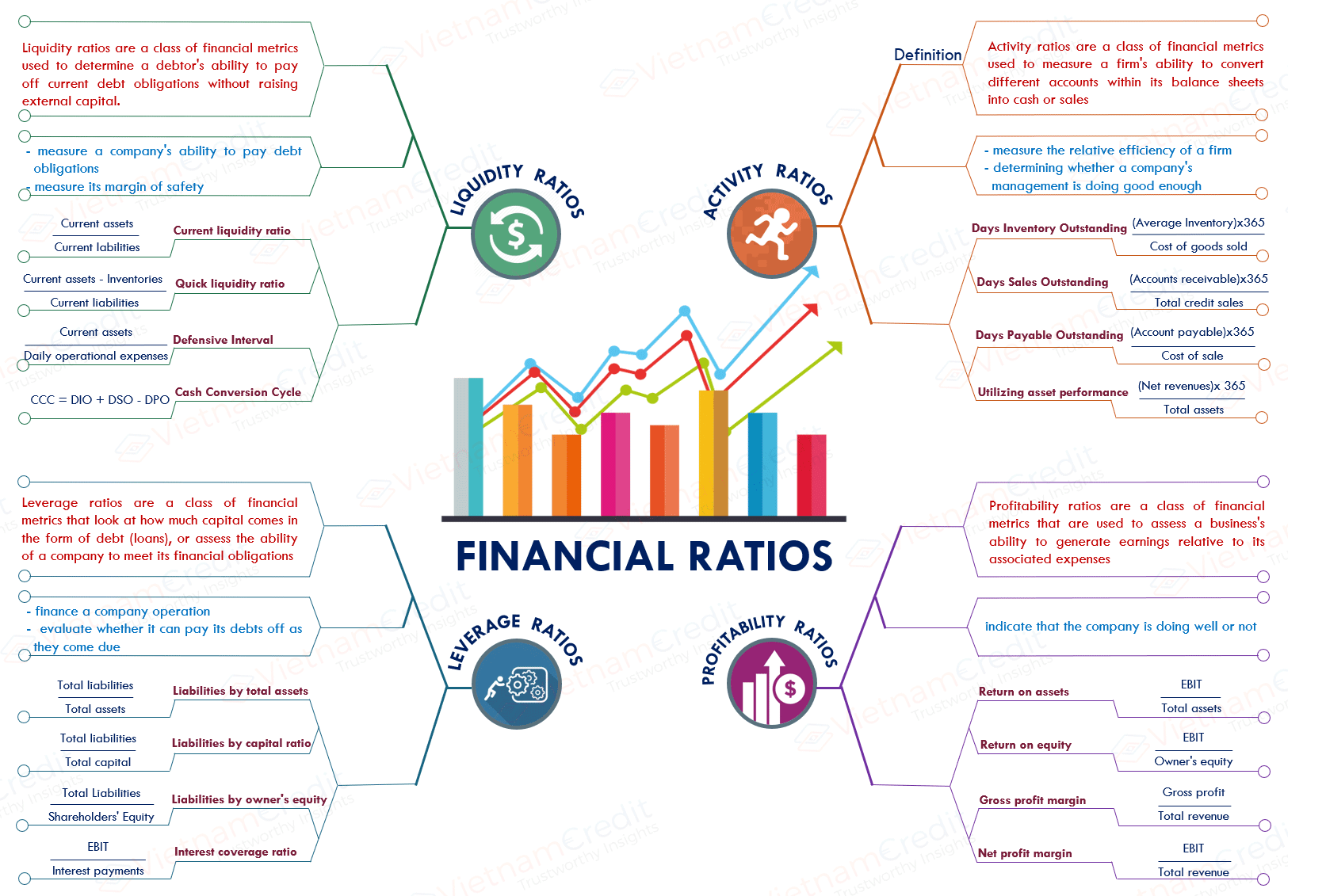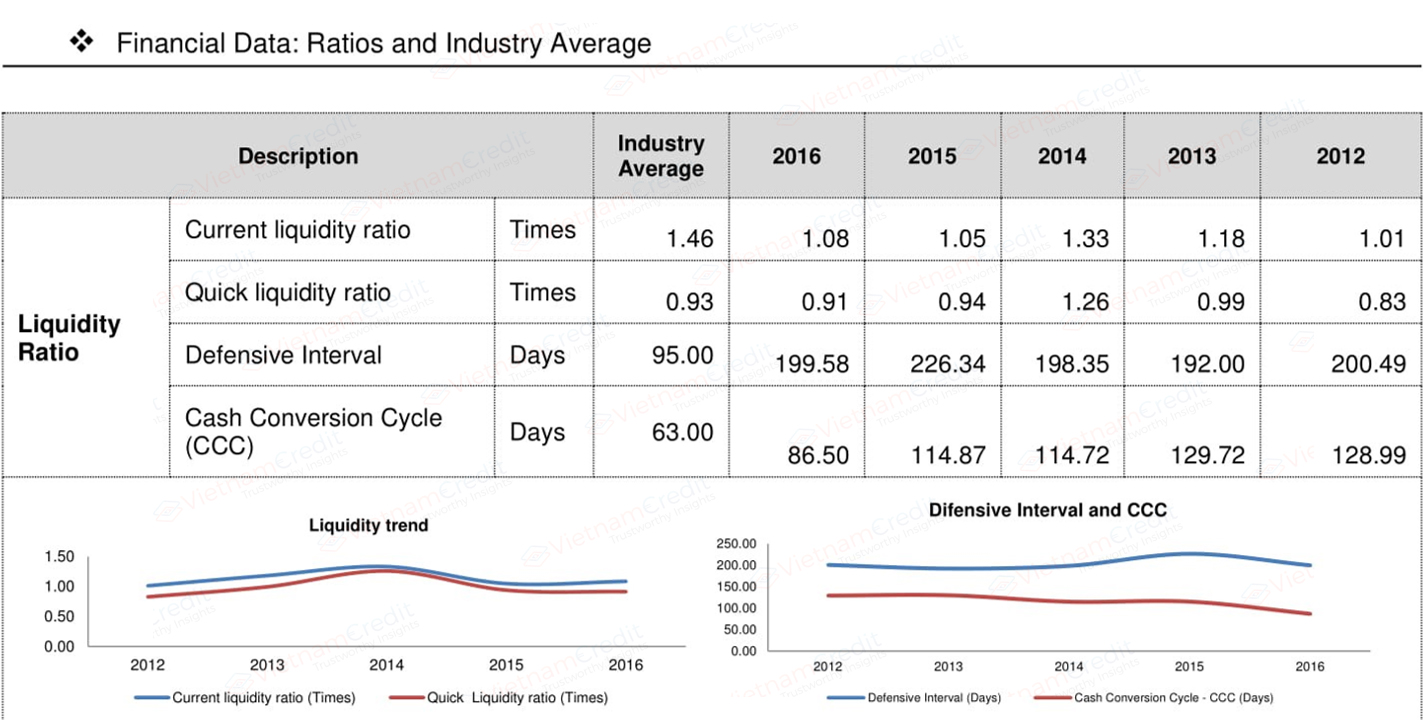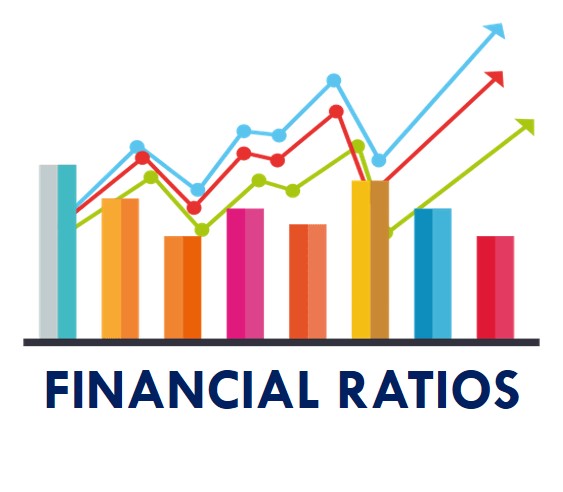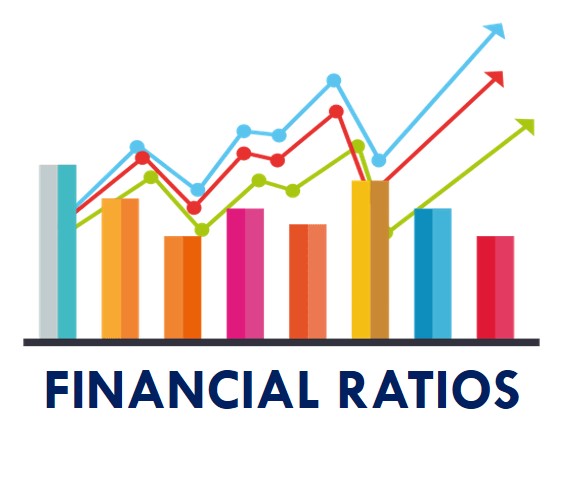Have you ever wondered “why economists invented so many financial ratios?”. It was just a common question while we are used to seeing that these proportions are all too boring and terribly hard to remember. However, if you underestimate the importanc
Have you ever wondered “why economists invented so many financial ratios?”. It was just a common question while we are used to seeing that these proportions are all too boring and terribly hard to remember. However, if you underestimate the importance of those figures, you are about to make a huge mistake. Every ratio provides its best applicability, yet it depends on your purpose and the reliability of a company’s data. This article will draw you several basic ideas of this topic, along with how to use it wisely.
According to Wikipedia, a financial ratio or accounting ratio is a relative magnitude of two selected numerical values taken from an enterprise's financial statements. Often used in accounting, there are many standard ratios used to try to evaluate the overall financial condition of a corporation or other organization. Financial ratios may be used by managers within a firm, by current and potential shareholders (owners) of a firm, and by a firm's creditors. Financial analysts use financial ratios to compare the strengths and weaknesses of various companies. If shares in a company are traded in a financial market, the market price of the shares is used in certain financial ratios.
But if it is just a math formula, how can it be crucial for analysists? This following example will help you understand:
Given that we have two company with some figures:
- Company A (Net profit: $876,584 & Net sale: $2,235,376)
- Company B (Net profit: $1,562,457 & Net sale: $6,856,472)
On the first hand, the number “$876,584” gives you nothing. A number itself is only a group of characters, such as “8”, “7”, “6”, and “5”. Without comparison, we cannot see any difference between these two companies.
On the other hand, obviously, “$876,584 < $1,562,457 “and “$2,235,376 < $6,856,472” give you something, but still too little. We all see that Company B seems bigger than Company A, yet we may not know if “bigger” means “better”.
Then, we compare their “Net Profit Margin” (NPM = Net profit/Net sale)
- Company A (Profit margin: $876,584/$2,235,376 = 0.3921 = 39.21%)
- Company B (Profit margin: $1,562,457/$6,856,472 = 0.2279 = 22.79%)
This figure directly measures what percentage of sales is made up of net income. In other words, it measures how much profits are produced at a certain level of sales. That means if the two company gain $100 from their sale, company A will earn $39.21 onto its profit compared to $22.79 of company B, meaning that company A is more efficient in terms of performance than company B.
Can you imagine that those figures are important now? If you do, you may take a quick glance at 4 popular types of financial ratios and their features as below:

-
Liquidity Ratios
Liquidity ratios are a class of financial metrics used to determine a debtor's ability to pay off current debt obligations without raising external capital. Normally, people use them to measure a company's ability to pay debt obligations and measure its margin of safety. There are 4 commonly used liquidity ratios:

The current ratio is a liquidity ratio that measures a company's ability to pay short-term and long-term obligations. To gauge this ability, the current ratio considers the current total assets of a company (both liquid and illiquid) relative to that company’s current total liabilities. The formula for calculating a company’s current ratio is:
Current Ratio = Current Assets / Current Liabilities
The current ratio is called “current” because, unlike some other liquidity ratios, it incorporates all current assets and liabilities. It is also known as the working capital ratio.
The quick ratio is an indicator of a company’s short-term liquidity and measures a company’s ability to meet its short-term obligations with its most liquid assets. Because we're only concerned with the most liquid assets, the ratio excludes inventories from current assets. The quick ratio is calculated as follows:
Quick ratio = (current assets – inventories) / current liabilities
The quick ratio is also known as the acid-test ratio.
The DIR is considered by some market analysts to be a more useful liquidity ratio than the standard quick ratio or current ratio due to the fact that it compares assets to expenses rather than comparing assets to liabilities. The DIR is commonly used as a supplementary financial analysis ratio, along with the current or quick ratio, to evaluate a company's financial health, since there can be substantially different DIR and quick or current ratio values if, for example, a company has a large amount of expenses but little or no debt. The DIR is calculated as:
DIR = current assets / daily operational expenses
The cash conversion cycle (CCC) is a metric that expresses the length of time, in days, that it takes for a company to convert resource inputs into cash flows. The cash conversion cycle attempts to measure the amount of time each net input dollar is tied up in the production and sales process before it is converted into cash through sales to customers. This metric looks at the amount of time needed to sell inventory, the amount of time needed to collect receivables, and the length of time the company is afforded to pay its bills without incurring penalties. The cash conversion cycle is calculated as:
CCC = DIO + DSO – DPO
To be continued

























































